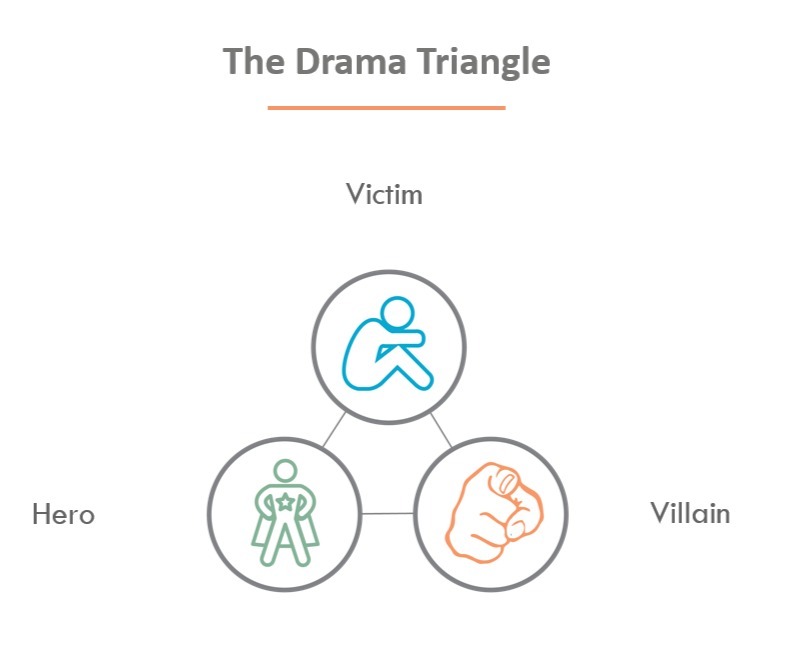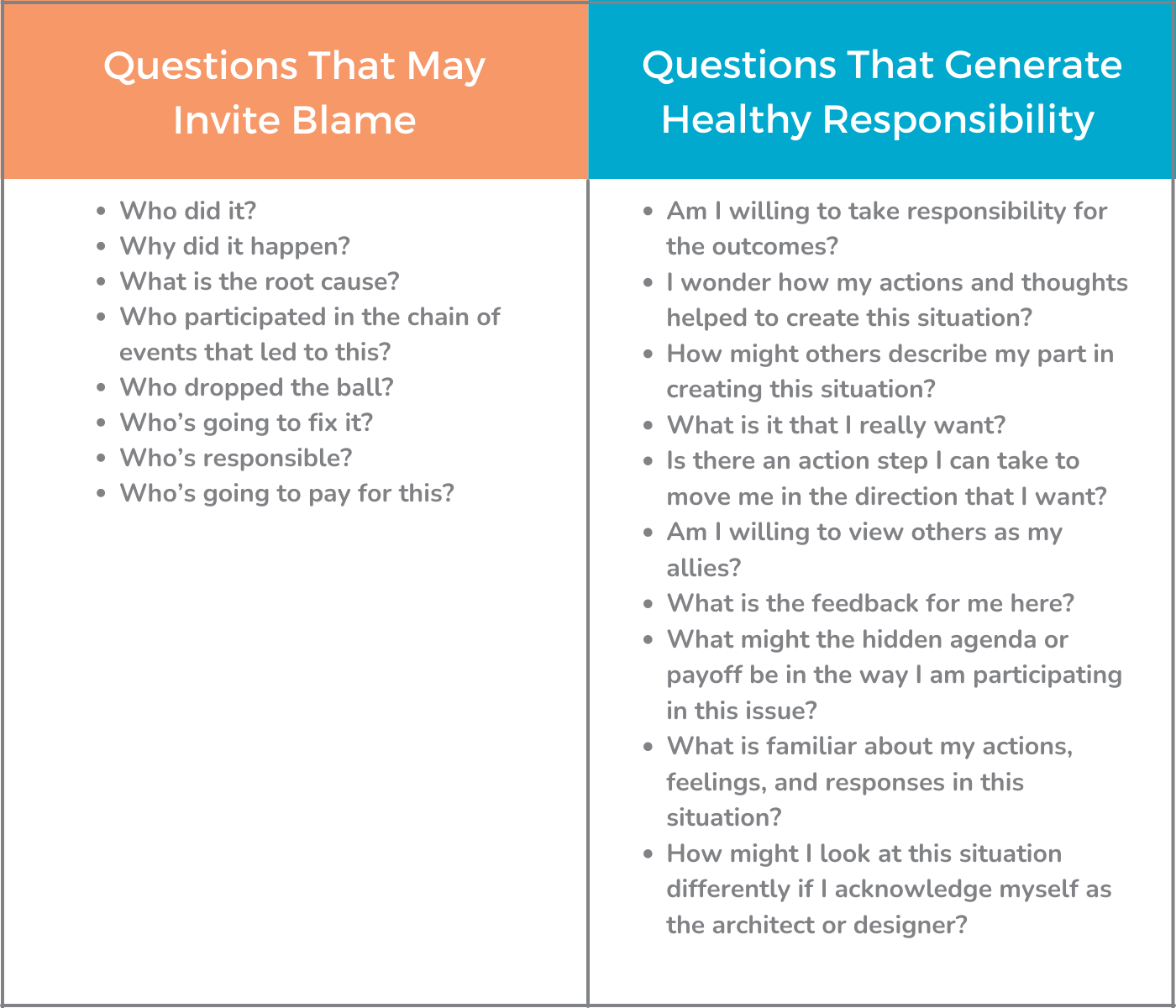Crafted Leadership team asks leaders to describe how they feel about the word responsibility, common responses include burden, heavy, and tired. Our own research and experience suggests that this sort of “responsibility fatigue” is pervasive, leads to burnout, and arises from unhealthy and unsustainable perceptions of responsibility.
Crafted Leadership developed the Responsibility Reset process to help proactive leaders move from the traditional model of outsourcing responsibility to an innovative model of 100% responsibility. When you come from a place of 100% responsibility – not more, not less – you increase your energy, ability to spot creative solutions, and job satisfaction.
While the Responsibility Reset requires new awareness and practice, it’s a simple, straightforward model that gets immediate results.
Here’s how it works.
Defining 100% responsibility
To understand the principle of a Responsibility Reset, we first need to look at what we mean by responsibility—what are we resetting to?
Rather than seeing responsibility as an obligation, what if you look at it as an empowering choice. Responsibility = the ability and the willingness to respond. For instance, imagine walking across a parking lot and seeing an empty soda can on the ground. By conventional standards, you’re not “responsible” for the soda can if you’re not the one who dropped it. But you also care about the earth and within the framework of having the ability to respond, you choose to pick up the can and recycle it. See the difference?
We are advocating that leaders work from a place of healthy responsibility. Healthy responsibility is when you couple your ability to respond with your 100% willingness to take responsibility for what you are creating. Healthy responsibility = 100% responsibility.

Gay and Katie Hendricks of the Hendricks Institute have conducted thousands of hands-on experiments with people around the world in their workshops. Their research shows that one of the most important elements of successful creative endeavors, including leadership, is your ability to take 100% responsibility for what is occurring in the moment within yourself and with others. If you notice yourself blaming, complaining, or feeling resentment, you’re likely taking more or less than 100% responsibility.
A Responsibility Reset is the act of realizing that you’re reacting rather than responding, taking a moment to locate yourself on a self-awareness scale, and making choices from that awareness to reset yourself to a place of healthy responsibility. From a state of healthy responsibility—rather than the typical over/under-functioning—we empower ourselves and others.
The 3 steps to activate a Responsibility Reset
1. Recognize the drama triangle when you see it. Consider a conflict you have in your life right now with a colleague, client, family member, friend, or even yourself. Maybe it was with the person who cut you off on your drive to work or the co-worker who takes a long time to get to the point. If you find yourself wanting to blame, defend, or argue with that person, you are probably playing a part in the drama triangle.
The drama triangle is a social model developed by Stephen Karpman that provides a way for people to locate themselves in relation to 100% responsibility. Based on three positions—victim, villain, or hero—the primary motivation from within the triangle is to be RIGHT rather than to assume healthy responsibility.
Each position comes with favored expressions:
- The villain’s includes phrases like, “It should be different; “You’re doing it wrong;” “I don’t care.” The angry boss who yells is an archetype of this position.
- The victim’s: “It’s hard;” “I have to;” “There’s nothing I can do.” The colleague who has excuses or explanations for every missed deadline is an archetype of the victim.
- The hero’s: “I can handle it;” “Poor you;” “Let’s all get along.” The co-worker who constantly covers for others and then experiences burnout is an archetype of the hero.
If you are operating from within the drama triangle, you are either taking too much or too little responsibility. We encourage leaders to recognize the archetypal and subtle forms of each position and to become skillful at spotting the drama triangle in action at work.
A success story: stepping out of the drama triangle
Read here about how one leader successfully used her awareness of the drama triangle to shift patterns in her professional and personal contexts.
2. Locate yourself on the responsibility scale. Our colleague Anna McGrath of Godfrey Dadich Partners created this handy scale to articulate the signs and symptoms associated with taking less than or more than 100% responsibility.

As you look at the scale, from what place do you primarily operate?
The Responsibility Reset in action
One of our clients would constantly work overtime to improve sales presentation materials because another colleague on the project provided error-filled first drafts. Initially, it was easy for our client to blame her colleague, with lots of data to support her position. But from the perspective of 100% responsibility, she began to see that she was equally responsible for creating an under/over dynamic where she over-functioned and required others to under-function. From the place of 100% responsibility, she became curious and took action to make changes. The resulting changes included a conversation with her colleague in which our client took responsibility for her over-functioning and made new, clear requests of her colleague. Her responsibility reset gave our client a sense of empowerment and opened a robust dialogue with her co-workers.
More than just a sense of power, our client felt more relaxed and happy at work. As she began to release her grip on over-functioning and playing hero, she reported feeling less fatigued and even booked her first vacation in years!
3. Exchange blame questions for wonder questions. As we shared in the Coloradoan, when something inevitably goes awry, inspiring leaders will ask questions that cultivate healthy responsibility, not blame.
In their book The 15 Commitments of Conscious Leadership, authors Dethmer, Chapman and Warner Klemp introduce the idea of blame and wonder questions:
Try it yourself
Consider the questions above. As you read each set of questions, notice what you feel in your body — for example, do you tense up or relax? Imagine you are at work, and you are having a team meeting about a project that has gone awry. What would it be like if you (or another leader) started with the wonder questions?
Want a sustainable, happy organization?
Leaders and teams who regularly practice responsibility reset will see these results:
- Increased collaboration, energy, and trust
- Less fatigue and burnout
- Increased job satisfaction
- Increased creativity and innovation
If you’re interested in learning practical, actionable leadership skills or learning a shared leadership framework, language, and tools for your team, contact us at nancy@craftedleadership.org or julianna@craftedleadership.org to schedule a call.



